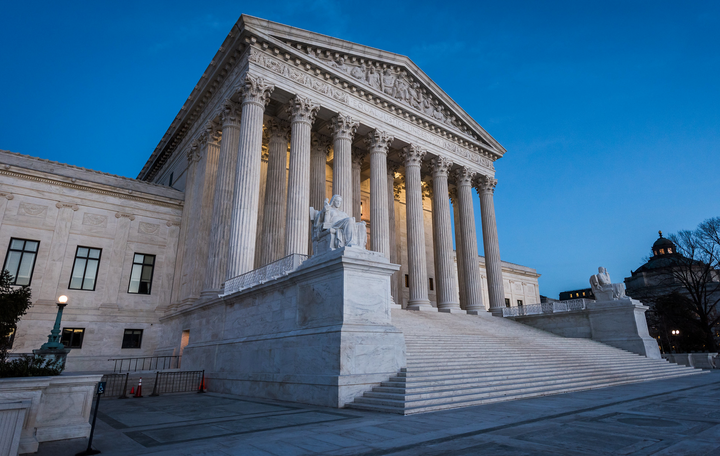Twenty Years Of Barbarism At Guantánamo: Biden Could End It But Lacks The Political Will

The first “high-value detainee” at Guantánamo military prison was approved for transfer a day before the detention camp marked the 20th anniversary of confining prisoners in the “war on terrorism.”
According to lawyers from Center for Constitutional Rights (CCR) who represented him, Guled Hassan Duran was captured in Djibouti in March 2004. The CIA renditioned him to a secret prison site, where he was tortured and abused prior to his transfer to Guantánamo in 2006. He was designated by President Barack Obama’s review task force for indefinite detention, even though he was not charged with a crime.
Duran is a citizen of Somalia with “prior residence in Germany and Sweden.” Congress prohibited the United States government from transferring any Guantánamo prisoners to Libya, Somalia, Syria, or Yemen in 2015. Because he cannot return to Somalia, it could be several years before he is released to a country willing to accept him.
Thirty-nine prisoners remain indefinitely detained at Guantánamo. They have been in confinement for the past 15-to-20 years without charge or trial.
The withdrawal of U.S. military forces in Afghanistan in 2021 gives the U.S. government even less of a justification for keeping the prison open. However, President Joe Biden’s administration has displayed little to no political will to close Guantánamo once and for all.
Or to put it another way, Biden has not demonstrated that his administration will make sure he finishes a job he started when he was part of the Obama administration in 2009 and they formally pledged to close Guantánamo.

'This Monstrous Creation Of The U.S. Government'
CCR, a lead organization in the fight to shut down the detention camp, declared, “For 20 years, this monstrous creation of the U.S. government has been intentionally inflicting human suffering."
"Today, we think of the victims: the 780 Muslim men and boys, who have faced injustice and brutality, from torture to indefinite detention to sham trials to force feeding to profound indifference, if not hostility, from U.S. political leaders.”
“We also think of the families who have been without their loved ones for so long and do not know when or if they will see them again,” CCR added.
Twenty-seven prisoners at Guantánamo have never been charged. CCR estimates that 26 prisoners survived CIA torture. Five of them, including Duran, are represented by CCR.
Sufiyan Barhoumi, who is from Algeria, was cleared for transfer in 2016, but the the Obama administration failed to transfer him out of Guantánamo before President Donald Trump was inaugurated. He was brought to the detention camp in June 2002.
Brought to Guantánamo in 2004, CCR says Sharqawi Al Hajj, who is from Yemen, was tortured at “two CIA black sites.” As a result, he suffers from severe health problems that could result in “total bodily collapse.” The Biden administration approved him for transfer in June 2021, however, he cannot return to Yemen because of the congressional ban that Obama signed into law.
A Saudi citizen named Mohammed Al Qahtani was allegedly subject to CIA torture and rendition before he arrived at Guantánamo in February 2002. He was diagnosed with schizophrenia prior to this abuse. His mental health is “deteriorating rapidly,” according to CCR. But he remains in confinement despite the fact that Qahtani is charged with no crime.
In fact, in 2009, Susan Crawford, a U.S. Defense Department official who was the head of the military commissions, admitted the U.S. “tortured” Qahtani.
“The techniques they used were all authorized, but the manner in which they applied them was overly aggressive and too persistent,” Crawford told the Washington Post. “You think of torture, you think of some horrendous physical act done to an individual. This was not any one particular act; this was just a combination of things that had a medical impact on him, that hurt his health. It was abusive and uncalled for. And coercive. Clearly coercive. It was that medical impact that pushed me over the edge.”
Qahtani is apparently the only person the U.S. government ever publicly admitted they tortured. Yet when CCR pushed for the release of videos and photos of Qahtani to show Americans evidence of systematic abuse, the Obama administration blocked their release in federal court.
U.S. Central Command Chief of Staff Karl Horst argued the release of photos and video would endanger “U.S. military personnel, diplomats and aid workers serving in Afghanistan and elsewhere” and aid the “recruitment and financing of extremist and insurgent groups” because “enemy forces in Afghanistan” and elsewhere “have previously used videos and photographs [particularly of U.S. forces interacting with detainees] out of context to incite the civilian population and influence government officials.”
The media published images in 2004 “relating to allegations of abuse of Iraqi detainees” (i.e. Abu Ghraib) and media reported in 2005 on “alleged incidents of mishandling of the Koran at Guantánamo,” Horst added.
To be clear, the Obama administration argued evidence of torture had to be kept secret because it would upset groups the U.S. had designated as terrorist organizations. They even told the courts the photos and videos “could be manipulated to show greater mistreatment than actually occurred, or change the chronology of actual events” in order to help the Pentagon hide torture and abuse. (The courts shamefully accepted these secrecy arguments.)
The First Survivor Of CIA Torture At Black Site Prisons To Speak Out—While Still In Custody
The Biden administration has yet to “re-establish the special envoy office in the State Department dedicated to the prison’s closure,” according to Amnesty International.
“On the contrary, the administration has just announced plans to build a new courtroom at Guantánamo to continue the work by the military commissions – the very opposite of a blueprint to shut the place down,” Amnesty stated on the 20th anniversary.
As Amnesty noted, in 2021, the world heard horrific stories of torture and abuse from Majid Khan, Abu Zubaydah, and Mohamedou Slahi, who was the subject of a film called "The Mauritanian."
Khan is a Pakistani eligible for release in February 2022. He had political asylum status in the United States before he was brought to Guantánamo in 2006.
CCR, which represents him, says he is “the first survivor of the CIA torture program to discuss in public his experiences at black sites.” [PDF]
Eight U.S. military officers sentenced Khan to 26 years in prison in October 2021. The New York Times called it “symbolic” because he became a “government cooperator” when he pled guilty in February 2012. Seven of the eight officers recommended clemency for Khan.
A sentencing statement featuring brutal descriptions of his torture and abuse was read by Khan in a courtroom at Guantánamo.

“I can say for certain that I was subjected to water torture that induced the feeling of drowning several times,” Khan stated. “It is hard to describe, or put into words, how it felt to be waterboarded. With a hood wrapped around my face and water pouring down my throat, I coughed, gagged, screamed, and couldn’t breathe. I felt like I was going to die.”
When Khan was brought to the Salt Pit prison in Afghanistan, the CIA removed his clothes and left him cold and naked. He was given no food and afraid to drink the water the CIA officers provided.
“I was periodically and repeatedly doused with water,” Khan recalled. “The room was pitch black, but I could feel tiny bugs, smaller than mosquitoes, biting me repeatedly until I bled. With my hands shackled, I couldn’t swat the bugs or scratch the sores they left. There was also music played constantly at deafening volumes. I remember thinking the room was shaking.”
“I was hung at a height where I was able to bend my legs slightly, but I was not able to sit or kneel. I remember the intense feeling of uncertainty that I felt; it was horrifying. I was so scared. I had no choice but to urinate on myself and the floor.”
Khan continued, “I was so terrified that I had diarrhea. My back and entire body was in a constant state of excruciating pain, partly because I had preexisting back problems. I was left for days with the smell of urine and feces that had collected on my body.”
The CIA brought Khan to a secret prison referred to as “Detention Site Orange,” where he was held for a longer amount of time before his transfer to Guantánamo.
“In the month of September 2004,” Khan says he was “raped by the CIA medics.” He was engaged in a series of hunger strikes. “While being restrained, they inserted tubes or objects into my anus against my will. This was different than the enemas they had previously used.”
“Sometimes it was done in my cell. Other times I was restrained on a stretcher and moved to another room. In either location, I was restrained very tightly and securely by at least two guards. A CIA medic was there to administer the insertions, but it was not a medical procedure.”
Khan added, “I remember one time in my cell I asked the medic why he was doing this, and he whispered with viciousness, ‘You’re a fucking terrorist.’ They used green garden hoses and one end was connected to the faucet as they ‘rehydrated me.’”
“I remember feeling immense pressure in my bowels, a pain I had never felt. I couldn’t stop myself from evacuating my bowels. I think these forced rectal insertions were done to make it appear like I had eaten, digested food, and used the toilet. To this day, I experience extreme discomfort from hemorrhoids as a result of my treatment.”
Faced with repeated torture, Khan told his captors what they wanted. He was scared. He wanted the torture to stop. He made false statements to interrogators in order to convince them he was “compliant and cooperative.”
Khan continued to lie when he arrived at Guantánamo because it renewed his fears and forced him to relive prior traumas and experiences at the hands of CIA interrogators. It wasn’t until October 2007 that he finally felt comfortable enough to tell the truth to his defense team and take responsibility for some of what led to his capture.
“Mr. Khan has been held without basic due process under the U.S. Constitution. Specifically, he was held without charge or legal representation for nine years until 2012 and held without final sentencing until October 2021,” U.S. military officers wrote in their clemency letter [PDF].
The officers acknowledged Khan was “subjected to physical and psychological abuse well beyond approved enhanced interrogation techniques, instead being closer to torture performed by the most abusive regimes in modern history. This abuse was of no practical value in terms of intelligence, or any other tangible benefit to U.S. interests.”
“Instead, it is a stain on the moral fiber of America. The treatment of Mr. Khan in the hands of U.S. personnel should be a source of shame for the U.S. government.”
Further Reading: Guantanamo Whistleblowers Who Spoke Up Against a Legal Black Hole



Comments ()